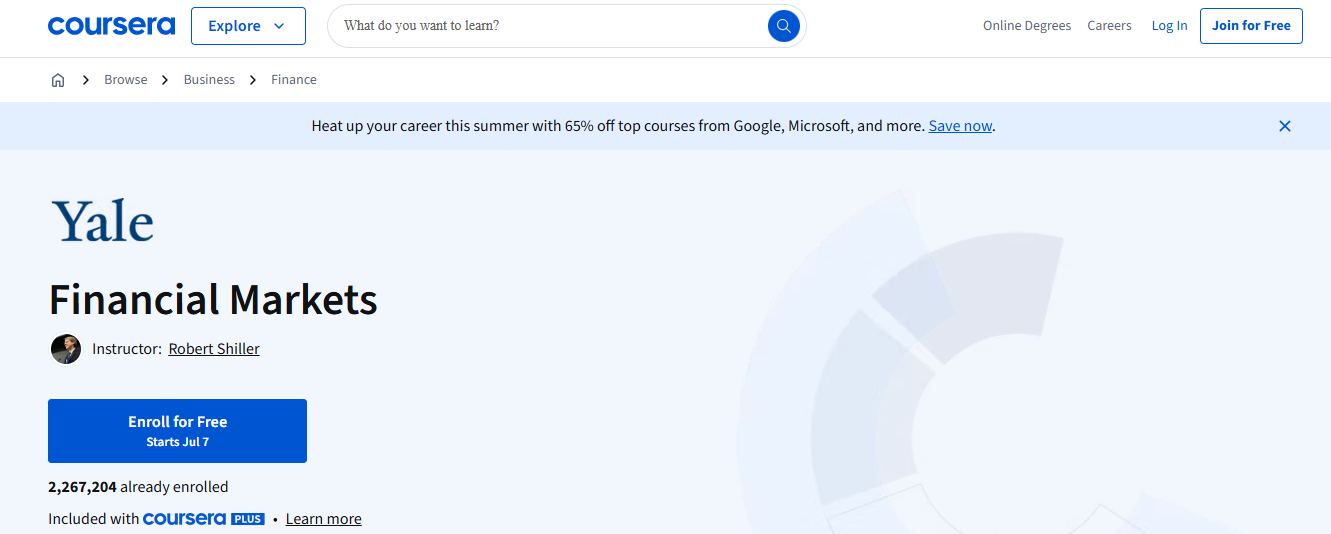15 Common Trading Mistakes You Must Avoid
Avoid costly errors with this list of 15 common trading mistakes. Learn what to watch out for before placing your next trade.
.jpeg)
Navigating the world of trading can feel like exploring a dense forest without a map. You think you’re on the right path, but suddenly, you’re lost, surrounded by towering mistakes that seem to pop up out of nowhere. The truth is, many traders find themselves repeating the same common mistakes, especially when trying to follow Smart Money Trading strategies. Sound familiar? You’re not alone. However, don’t worry; this guide is here to help you recognize these missteps and steer clear of them, giving you a better chance to maximize your trading capital.
And speaking of maximizing your capital, Aqua Funded's funded trading program is designed to help traders like you reach their full potential. With this program, you’ll have the resources and support to refine your skills and avoid those pesky pitfalls.
Benefits of Trading

Flexibility: Set Your Own Trading Pace
Trading gives you the chance to work when you want, unlike the typical nine-to-five grind. You can choose to trade at any time, including morning, lunch, or late at night. With markets operating across different time zones, you can find opportunities at any time. Online platforms and mobile apps let you trade from anywhere, be it home, a coffee shop, or on the road. There’s no need for a physical office; you just need a system and internet access. This kind of flexibility is rare in most careers.
Profit Potential: More Than Just Rising Prices
Trading isn’t just about watching prices go up. It’s about making the most of market movements, whether they’re heading north or south. The more you hone your trading skills, the better your chances of boosting profits over time. Many traders turn this into a freelancing gig or even a full-time career, generating significant income. The possibilities are vast, and the more you learn, the more you can earn.
Liquidity: Quick Cash Availability
Liquidity means you can easily buy or sell assets without messing up the price. High liquidity means you can swiftly convert your holdings into cash. This makes trading a handy way to handle your finances. Assets such as stocks, forex, and commodities boast high liquidity, whereas the real estate market and fixed assets lag in this respect. Know what you’re working with, and you can manage your assets more effectively.
Technology and Tools: Modern Trading Made Easy
Today’s trading platforms come loaded with tools to simplify the process. Automated trading allows you to set your trades to trigger under specific conditions, eliminating human error from the equation. Real-time market data and charts enable you to make informed decisions. Stop-loss orders and alerts can help you manage risk and avoid losses. These tools are designed to help you trade smarter, not harder.
Independence: Be Your Boss
Trading gives you the power to make your own decisions. You decide when, what, and how much to trade. Whether you treat it as a side hustle or a full-time job, you set your hours. As you gain experience, you can increase your investments and boost your earnings. It’s about having the freedom to pursue your financial goals on your terms.
Related Reading
- How Much Money Do You Need to Start Trading
- How Long Does It Take to Learn Trading
- What Challenges Do Traders Face?
- Futures vs Stocks Trading
- Why is Trading So Hard
- How to Swing Trade
- How to Multiply Your Money
- How to Start Trading With No Money
25 Tips for Trading Like a Pro

1. Unlock Potential with Aqua Funded
Transform your trading prowess into significant earnings without risking personal funds. AquaFunded offers access to accounts of up to $ 400,000, boasting flexible trading conditions, no time constraints, and easy-to-reach profit targets. Enjoy up to 100% profit split. Join over 42,000 traders globally who’ve already reaped over $2.9 million in rewards, supported by a 48-hour payment guarantee. Explore trading today with instant funding or prove your skills through customizable challenges.
2. Grasp the Trading Fundamentals
Understanding the basics of trading paves the way for ongoing success. These fundamental concepts include capital requirements, market selection, performance monitoring, bid/ask prices, order types, risk management, and trading hours. Resources such as books, reputable websites, and exchanges offer valuable insights. This foundational knowledge helps determine your preferred investment products.
3. Cultivate Discipline
Discipline isn’t bought; it’s built. Traders often overspend in an attempt to compensate for a lack of self-control. Instead, rely on your trading plan and maintain discipline, even during losing streaks. Confidence in your strategy is essential.
4. Master Advanced Basics
Choose your trading niche: futures, options, or stocks. Understanding the advanced basics of your chosen specialty is crucial. Utilize books, online resources, and mentors to acquire specialized expertise in your niche, expanding beyond general trading knowledge.
5. Break Away from the Crowd
Long-term success requires positioning away from the masses. Avoid stock boards and chat rooms filled with unserious individuals and those with hidden motives. Instead, strive to think independently and strategically.
6. Manage Your Emotions
Bad days happen. Professional traders understand this and avoid getting upset or overly enthusiastic. Prepare yourself mentally for both success and losses. Don’t let emotions hijack your decision-making process.
7. Develop Effective Trading Systems
Crafting trading techniques and systems aids in discovering practical ways to profit. Seek trustworthy sources that offer proven strategies, and consider consulting with professional traders who share their methods. Outline your plan, noting what works and where improvements are needed.
8. Engage and Update Your Trading Plan
Keep your trading plan dynamic by regularly updating it to reflect current market conditions. Integrate new ideas and discard ineffective ones. Revisit your plan whenever you face challenges, ensuring it remains a valuable tool for recovery.
9. Know When Patience Pays Off
In scenarios like executing large orders, patience may be your best ally. Avoid the instinct to rush, as speed can work against you in these situations. Strategic patience can lead to better outcomes.
10. Gain Real-World Trading Experience
Real market experience is invaluable. When testing new systems, focus on being profitable and consistent rather than perfect. Use actual trades to refine your strategies and improve your performance over time.
11. Avoid Shortcuts and Do the Work
Relying on shortcuts is a losing strategy. Your competition invests hundreds of hours in perfecting their methods. Achieve long-term success through hard work, discipline, and dedication.
12. Plan for Various Scenarios
Plan for events such as company results or economic reports. Develop multiple plans (A, B, C) to react effectively and swiftly. Preparing in advance gives you a competitive edge in the market.
13. Practice with Paper Trading
Many platforms offer paper trading, allowing you to test strategies in a simulated environment. While profits aren’t real, this practice helps identify solid components to use in actual trading.
14. Avoid Following the Crowd
Profits rarely come from following the majority. Avoid obvious trade setups visible to everyone. Independent thinking increases your chances of success.
15. Analyze Trades from Multiple Perspectives
Consider macro and micro factors, including the economy, sector, company fundamentals, technical analysis, order flow, price chart, and news. Weighing these factors increases confidence in pulling the trigger on trades.
16. Choose a Reliable Broker
A dependable broker is crucial to your trading success. Look for brokers specializing in your niche, as they may offer better opportunities. Be mindful of fees and commissions.
17. Ignore Market Gurus
Your money is on the line, not theirs. Market gurus may promote their positions rather than your interests. Trust your analysis and instincts.
18. Think Multiple Steps Ahead
Plan several moves, considering second-or third-order effects of events. This foresight helps avoid rash decisions and leads to better trading outcomes.
19. Train Your Focus
Professional traders focus intently on tasks, blocking distractions. Train yourself by practicing meditation, minimizing distractions, and using focus tools to enhance your concentration.
20. Harness Your Intuition
Trading requires both analytical and creative thinking. Cultivate both sides of your brain through activities like meditation, yoga, or walking to enhance your trading results.
21. Seek Hedging Opportunities
Professional traders hedge trades to manage risk. For example, if you go long on a stock, consider shorting a similar one to protect against market or sector movements. This approach allows for larger positions with reduced risk.
22. Master Risk Management
Effective risk management involves understanding potential threats and creating strategies to mitigate them. Establish how much you’re willing to lose per trade and stick to it. Confidence in your risk management supports smarter decisions.
23. Avoid Revenge Trading
Drawdowns are part of trading. Accept them and stick to proven strategies. Trying to make up for losses with aggressive trading is a recipe for disaster.
24. Remember, Tools Don’t Think
Tools can’t replace skills. Expensive software with proprietary signals may hinder experience. Use tools that support your plan, but trust your judgment over automated signals.
25. Keep a Trading Journal
A trading journal helps track metrics and refine strategies. Record details like date, time, setup, market info, lot size, position, tick value, entry/exit prices, stop loss, profit/loss, and initial risk. This practice facilitates logical decision-making and informed strategy adjustments.
15 Common Trading Mistakes You Must Avoid

1. Trading Without a Plan
Jumping into trading without a defined strategy is like embarking on a journey without a map. Reflect on your motives, are you after side income, a full-time career, or simply a challenge? Your goals will shape your trading strategies. Assess the time you can dedicate, the types of trades to pursue, and whether your knowledge is adequate or needs enhancing.
2. Ignoring Market Research
Trading based on gut feelings or tips alone can be costly. Before entering a position, thoroughly understand the market. Is it over-the-counter or on an exchange? Is it volatile or stable? Proper research ensures you’re not making blind bets.
3. Trading with Emotions
Greed and fear can lead to poor decisions. Greed leads to overtrading, while fear, including FOMO, prompts irrational behavior. These emotions often lead to losses. Stay level-headed and stick to your plan.
4. Overzealous Trading
The allure of quick profits can lead new traders to overextend themselves. This increases risk and can lead to early exits from the market. Build your skills gradually with demo accounts and small trades before moving on to more advanced strategies.
5. Over-Reliance on Software
While trading software offers speed and automation, it lacks human judgment. These systems can cause abrupt market shifts if not managed correctly. Understand the limitations of algorithmic trading before relying on it.
6. Poor Risk Management
Risk is inherent in trading, but it can be controlled wisely. Utilize risk management tools such as stop-loss and take-profit orders. Avoid high leverage and start with demo accounts to minimize potential losses.
7. Guesswork
Trading without preparation is akin to gambling. Education and market understanding are crucial. Utilize resources such as courses and webinars to build knowledge and practice with demo accounts before risking real money.
8. Holding Onto Losses
Hoping for a market reversal can lead to disastrous results. Day traders and those employing short-term strategies should quickly cut losses to protect their capital. Utilize stop-loss orders to automate this process.
9. Undefined Trading Style
Jumping into fast-paced strategies like scalping without proper understanding is risky. Identify a trading style that suits your personality and expertise to improve your chances of success.
10. Skipping Stop-Loss Orders
Trading without a stop-loss is a recipe for disaster. This tool helps prevent significant losses by setting a predetermined exit point. Both beginners and experienced traders benefit from implementing stop-loss orders.
11. Overexposing Positions
Committing too much capital to one market increases risk. While potential profits may rise, so do potential losses. Diversify investments to avoid this pitfall.
12. Trading Multiple Markets
Diversification is wise, but jumping between markets as a beginner can lead to distraction and loss of focus. Focus on a few markets to build competence before expanding.
13. Revenge Trading
Losing can tempt you into rash decisions to recover quickly. Revenge trading often leads to further losses. After a loss, take a step back, evaluate the situation, and regroup before trading again.
14. Misunderstanding Leverage
Leverage amplifies both gains and losses. Without proper understanding, it can wipe out your account. Educate yourself on leverage and its effects before using it in trades.
15. Ignoring Risk-to-Reward Ratios
Assessing the potential profit against the risk helps in making informed decisions. Beginners often shy away from risk, but understanding risk-to-reward ratios can guide more balanced trading strategies.
Turn your trading skills into substantial profits without risking your capital. AquaFunded offers a funded trading program that provides access to accounts of up to $ 400,000 with flexible conditions, time limits, easy profit targets, and a profit split of up to 100%. Join 42,000 traders worldwide who've already collected more than $2.9 million in rewards, backed by our 48-hour payment guarantee.
Related Reading
- What Happens if You Blow a Funded Account
- How to Become a Professional Trader
- Best Market to Trade for Beginners
- Tips for Day Trading
- Margin vs Leverage
- How Much Can You Make Day Trading With 100k
- Scalping Trading Strategy
- Margin vs Leverage
- Day Trading vs Options
- Best Time Frame for Day Trading
10 Best Courses to Learn Trading
1. Aqua Funded: Trade Big Without Risking Your Capital

AquaFunded offers traders the opportunity to generate substantial profits without risking their own funds. You can access accounts up to $400K with flexible trading conditions, no deadlines, easy profit targets, and up to 100% profit split. Over 42,000 traders globally have already collected more than $2.9 million in rewards, thanks to their 48-hour payment guarantee. Whether you want instant funding or prefer to prove your skills through customizable challenges, AquaFunded has you covered. Keep up to 100% of what you earn and start trading today.
2. Yale's Financial Markets on Coursera: Essential Foundations

Yale University's Financial Markets course, taught by Nobel laureate Robert Shiller, is a must for anyone serious about the financial markets. This course offers the academic foundation every trader needs before exploring advanced strategies. Shiller’s insights into market bubbles and behavioral finance provide a unique perspective on market psychology. You’ll learn how global financial markets function, the importance of risk diversification, behavioral finance principles, historical perspectives on economic crises, and more.
3. Warrior Trading: Comprehensive Day Trading Education

Warrior Trading’s Strategies and Scaling course is an extensive collection of day trading education. It includes over 100 hours of pre-recorded video lectures, live-streamed presentations, interactive tools, written articles, and community feedback. This course covers everything you need to know about day trading strategies and scaling.
4. Practical Stock Trading on Udemy: The Complete Foundation Course

If you’re looking for a hands-on approach to stock trading, The Complete Foundation Stock Trading Course on Udemy is a great choice. Instructor Mohsen Hassan focuses on the mechanics of stock markets, fundamental technical analysis, risk and money management strategies, trading psychology, and more. This course emphasizes the “how” of trading execution and technical analysis, rather than the “why” of market behavior.
5. Udemy’s Stock Market from Scratch: A Beginner’s Guide
For those new to trading, Stock Market from Scratch for Complete Beginners on Udemy is an excellent starting point. This course is specifically designed for novices and doesn’t require any prior knowledge. It’s a great value, especially if you can catch it at a discounted price.
6. Advanced Stock Trading on Udemy: Beyond the Basics

Building on the foundation course, Mohsen Hassan’s Advanced Stock Trading Course on Udemy delves into the sophisticated mechanics of professional trading. You’ll learn about market microstructure, company fundamentals, macroeconomic factors, and other relevant topics. The course also covers momentum-based and mean-reversion strategies, trading plans, and pair trading techniques.
7. Free Education from Charles Schwab: Learn at Your Own Pace
Schwab offers a vast collection of free trading and investing education accessible to anyone, even non-clients. Their content covers financial instruments like stocks and bonds, as well as derivatives like options and futures. The material is of high quality and regularly updated, making it current and relevant.
8. Humbled Trader on YouTube: Real Talk on Day Trading

Shay, known as “Humbled Trader” on YouTube, provides a balanced and transparent approach to day trading education. Her channel features educational content, live trade recaps, and guidance on developing discipline for consistent trading. With over 1.3 million subscribers, her teaching style is accessible and often humorous, making complex topics digestible.
9. Trading Psychology Workshop: Master Your Mindset

The London Academy of Trading’s Trading Psychology Workshop is a top choice for understanding the trader’s mindset. This course combines fundamental and technical aspects of trading with psychology, exploring how to manage one of the most underestimated aspects of trading.
10. Forex for Beginners on Udemy: Real Trades, Real Learning

This 5-hour course on Udemy distinguishes itself by showing actual live forex trades. Instructor Kirill Eremenko takes a hands-on approach, giving beginners a realistic view of currency trading. You’ll learn the fundamentals of forex, how to set up a broker account, execute trades, analyze potential trades, and implement risk management techniques.
Join Our Funded Trading Program Today - Trade with our Capital and Keep up to 100% of the Profit.

Consider trading with confidence, knowing your own money isn't at risk. With AquaFunded, you can trade up to $400,000 without risking your funds. This setup not only reduces stress but also helps you avoid common trading mistakes caused by fear or greed. Plus, you get up to 100% of the profits you earn, which means your success directly benefits you. AquaFunded is transforming the way traders operate, providing flexibility and support to help you achieve your goals.
Say Goodbye to Pressure with Flexible Trading Conditions
AquaFunded offers unique trading conditions that make life easier for traders. There are no time limits, so you can trade at your own pace without feeling rushed. This helps you avoid the typical mistakes that often result from feeling pressured, such as overtrading or taking unnecessary risks. With easy-to-reach profit targets, you can focus on innovative trading strategies that work for you. This approach helps you develop as a trader while also achieving your financial goals.
Join a Thriving Community of Successful Traders
With over 42,000 traders already on board, AquaFunded offers a supportive environment where you can learn from others and share your experiences. This community has collectively earned over $2.9 million in rewards, showing that AquaFunded is a reliable and trustworthy platform. By joining this network of traders, you can gain valuable insights and avoid common pitfalls that many new traders face.
Get Your Profits Fast with a 48-Hour Payment Guarantee
One of the most frustrating aspects of trading is waiting for your profits to materialize. AquaFunded understands this, which is why they offer a 48-hour payment guarantee. This means you can access your earnings quickly and easily, allowing you to reinvest in your trading strategies or take a well-deserved break. Fast payments also help you avoid the stress and anxiety that can lead to poor decision-making and common trading mistakes.
Instant Funding and Customizable Challenges: Choose Your Path
Whether you're a seasoned professional or just starting, AquaFunded has options for you. You can choose instant funding to begin trading right away, or you can take on a customizable challenge to prove your skills. These challenges are designed to help you grow as a trader, and they offer the opportunity to keep up to 100% of what you earn. By tailoring your experience to your needs, you can avoid common mistakes and build a successful trading career.
Avoid Common Trading Mistakes and Maximize Your Success
AquaFunded's innovative approach to funding and trading conditions helps you avoid common trading mistakes like overtrading, emotional decision-making, and poor risk management. By providing a supportive environment and the necessary tools to succeed, AquaFunded empowers you to become a more effective trader while also achieving your financial objectives. With their help, you can develop a winning strategy that works for you.
Related Reading
- Why Do Most Day Traders Fail
- Is Day Trading Profitable
- How to Take Profits in Trading
- Fair Value Gap Trading
- Best Time of Day to Trade Stocks
- How to Make Money Online Trading
- Prop Firms With No Time Limit
- Different Stock Trading Strategies
- Swing Trading Prop Firms
- Best Technical Indicators for Day Trading


